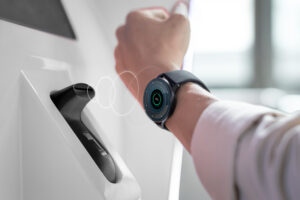The Technology Blog

Smart Clothing: The Future of Wearable Technology
The wearable tech market has grown rapidly in recent years. Smartwatches and fitness trackers are now essential for many people. But as wearable tech continues to evolve. It is one of the most exciting frontiers is the rise of smart clothing. Picture wearing clothes that boost your comfort and track your health. They can improve your performance or change based on your surroundings. Smart textiles and fashion are changing how we connect with the world. They help us monitor our well-being. This is no longer just a dream.
This blog will look at new ideas in smart clothing. We’ll discuss how it can be used in health, fitness, and everyday life. Also, we’ll explore what the future might bring for wearable tech. Smart clothing is changing how we see fashion and function. It includes sensors in fabrics and garments that can change colour or control temperature.
What is Smart Clothing?
Smart clothing, or smart textiles, are clothes that use technology for specific tasks. These functions can vary. They include monitoring heart rate and body temperature. They also enhance comfort and provide interactive experiences. Smart clothing is different from traditional wearable tech, like smartwatches. Smartwatches are worn as accessories. Smart clothing is built right into the fabric.
At its core, smart clothing merges fashion with functionality. Smart clothing aims to improve daily life. This includes shirts with sensors to track muscle activity. Jackets change temperature based on the environment. Shoes check your steps and posture.
How Does Smart Clothing Work?
Smart clothing works through a mix of advanced fabrics, sensors, and tiny electronics. These components fit right into the fabric. They don’t hurt the garment’s comfort, design, or look. The technology used in these garments can include:
- Conductive fibres: Special threads in fabrics that carry electricity. They help the garment connect with sensors and other devices.
- Flexible sensors: Lightweight and thin sensors that track health metrics. These health metrics include heart rate, body temperature, and muscle movement.
- Microchips: Small devices in clothing. They process data and send it to phones or wearables.
- Power sources: Rechargeable batteries or energy-harvesting systems that power the garment’s embedded electronics.
These technologies team up to give users helpful data and tailored experiences. Smart clothing becomes more than just a novelty.
Applications of Smart Clothing
Smart clothing is useful in many areas, especially health, fitness, and sports. Let’s look at the best and most useful ways to use smart textiles and wearable tech.
Health and Fitness Monitoring

Smart clothing offers a big benefit: it tracks health metrics in real-time. This is great for anyone looking to boost their fitness or manage ongoing health problems. Some of the key applications include:
1. Heart Rate and Respiratory Monitoring
Smart clothing can include sensors to monitor your heart rate and breathing while you exercise. This helps you monitor your heart health. Shirts and leggings now have built-in ECG sensors. They can track your heart rate variability. This gives you insights into your fitness level.
2. Posture Correction
Posture is another area where smart clothing can be beneficial. Posture-correcting clothes, such as shirts, bras, and back supports, have sensors. These sensors notice when the wearer is slouching. When the garment senses bad posture, it vibrates softly or alerts your smartphone. This is especially helpful for those who sit at desks for long hours or have back pain.
3. Muscle Activity Monitoring
Athletes and fitness enthusiasts can benefit from clothing that monitors muscle activity. Smart clothes use embedded electromyography (EMG) sensors to detect muscle contractions. This helps users optimise their workouts. Athletes can use these garments to target the right muscle groups. This helps prevent overtraining and injuries.
Smart Textiles for Enhanced Comfort
Comfort is a top priority for many consumers when it comes to clothing. Smart textiles are designed to elevate this experience. Here’s how:
1. Temperature-Regulating Clothing
Imagine wearing a jacket that adapts to the temperature of your surroundings. Smart clothing uses temperature-regulating fabrics. These fabrics can change their insulation based on the environment. This technology helps outdoor adventurers, athletes, and people in extreme weather. The garment can include materials such as thermochromic fabrics or phase-change materials (PCMs). These materials react to body heat or changes in the surrounding temperature.
2. Sweat-Wicking and Odour Control
Smart clothing can also manage sweat and odour through advanced moisture-wicking fabrics. Some clothes are made to soak up extra moisture and dry fast. This helps keep the wearer comfortable and dry. Fabrics with antimicrobial agents can cut down on bacteria that cause odours. This makes them great for athletes or anyone doing hard workouts.
3. Lightweight, Breathable Fabrics
Smart fabrics can be made lightweight, breathable, and comfy. They also keep their useful features. You can add flexible sensors and conductive fibres without reducing the garment’s breathability or softness. Smart clothing provides high-tech benefits while staying comfortable and lightweight.
Fashion and Aesthetic Appeal
Smart clothing prioritises performance and functionality. However, aesthetics matter in its design too. Trendy designs are key to making smart clothing popular with consumers. As a result, many smart fashion pieces are designed to look as stylish as they are functional.
1. Interactive Fashion
One exciting part of smart clothing is its ability to create interactive fashion. Picture a jacket that changes colour or patterns based on your feelings or the environment. This garment can use LEDs, OLEDs, or electrochromic materials. These elements create designs that change in real-time.
2. Fashion-Integrated Technology
Some brands are now adding wearable tech to their collections. This lets people enjoy high fashion and advanced technology together. A designer dress might have subtle LED lights or sensors. These features could change the dress’s look based on the wearer’s movements. This adds a futuristic touch to fashion shows or special events.
3. Sustainable Fashion
Another trend in the world of smart clothing is the focus on sustainability. Many smart textiles use eco-friendly materials. These materials are durable and recyclable. Some clothes are made from organic cotton, recycled polyester, or bio-fabrics. These materials are better for the environment than regular clothing.
Future Developments and Challenges
The field of smart clothing is still in its early stages, but it is evolving rapidly. Technology keeps getting better, so we can expect more advanced features ahead. But, some challenges must be solved before smart clothing can be everywhere:
1. Battery Life and Power Sources
Many smart clothes use small batteries to power their sensors and electronics. A key challenge is to extend battery life. This must be done while keeping the garment lightweight and comfortable. Researchers are looking into energy-harvesting technologies. They are focusing on solar power and kinetic energy. This aims to cut down on the need for frequent charging.
2. Durability
Another concern is the durability of smart textiles. These garments have delicate sensors and electronics. So, they need to handle washing, stretching, and everyday wear. Manufacturers are making stronger fabrics and protective coatings. This helps smart clothing last longer.
3. Data Privacy and Security

Smart clothing gathers personal data on health and lifestyle. This raises concerns about privacy and security. Keeping sensitive information secure is vital. This will help prevent third parties from exploiting it. Such security is key for the widespread use of smart clothing.
Conclusion: The Future of Smart Clothing and Wearable Technology
Smart clothing is the future of wearables. It offers great possibilities for health, fitness, comfort, and fashion. Smart textiles have many uses. They can monitor vital signs or change with your environment. Smart clothing faces challenges before it can become part of our daily lives. Issues like battery life, durability, and privacy need to be solved.
Smart clothing is changing how we use technology and experience our world. As we innovate, its role will only grow. Smart clothing is an exciting area to watch. It attracts athletes who want to enhance their performance. Fashion lovers looking for new styles are also drawn to it. Plus, anyone curious about wearable tech will find it interesting.
Are you ready to embrace the future of fashion and technology? Discover the latest in smart clothing. Check out popular brands and products in wearable tech to stay ahead of the curve. You have endless options! You can choose a fitness tracker, a temperature-regulating jacket, or an interactive fashion item.









